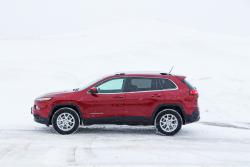 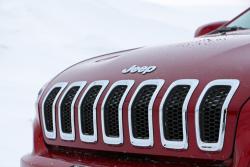 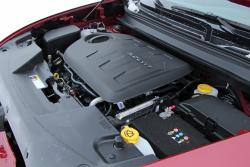 2014 Jeep Cherokee North 4×4 V6. Click image to enlarge |
Originally published on February 7, 2014
Review and photos by Jonathan Yarkony
In all the hyperbole regarding the Jeep Cherokee’s adventurous styling exercise and resurrection of a revered nameplate, I can only hope that we do not lose sight of just how good this car is. As far as I’m concerned, this is the car that turns the corner for Fiat Chrysler Automobiles in North America, and makes me expect great things from the upcoming 200 mid-size sedan. Between those two, you are looking at two of the three biggest pieces of the puzzle for Chrysler’s North American sales juggernaut, the third being the undeniably good Ram 1500. Pickup trucks, mid-size sedans and small SUVs are the biggest growth drivers in our current market, although luxury vehicles are also obviously huge profit drivers, so unleashing the Maserati Ghibli in our currently booming auto market is another well-timed release.
But back to just how good the Jeep Cherokee is. First, the engine. The automotive press has been singing the praises of Chrysler’s Pentastar 3.6L V6 for years now, winning a Ward’s 10 Best Engine award three consecutive years. The Pentastar line is now downsized to 3.2 litres in displacement to serve in Chrysler’s smaller products, starting with this 2014 Jeep Cherokee. Like the larger 3.6L V6, the aluminum-block 3.2 forgoes direct injection in favour of port injection with variable valve timing, piston cooling jets and innovative individual exhaust manifold runners for each cylinder that are built right into the aluminum cylinder heads. This provides cooling benefits that allow the engine to operate more efficiently without the cost and complexity of direct injection. Unique to the 3.2 is an oil pump that will stay in efficiency mode for longer, and a higher compression ratio (10.7:1 vs the 3.6’s 10.2:1) that boosts power delivery while maintaining efficiency.
Between the smaller size of the engine, a new nine-speed automatic transmission, and a rear-axle disconnect, this new-school Jeep achieves 12.4/8.7/10.7 in EPA city/highway/combined fuel consumption estimates (19/27/22 mpg). It actually achieves better highway rating than Jeep’s four-cylinder Compass (10.2 L/100 km or 23 mpg, also in 4WD trim) if not better city and combined (11.8/11.2 L/100 km or 20/21 mpg).
Compared to one of the few remaining V6 compact SUV competitors, the Cherokee falls a bit short. The Mitsubishi Outlander earns 11.8/8.4/10.2 L/100 km city/hwy/combined (20/28/23 mpg), and doesn’t hold a candle to Subaru’s 2.0L turbo at 10.2/8.4/9.4 L/100 km (23/28/25 mpg). Interesting fact: the weight of the Cherokee is 1,862 kg (4,106 lb) in 4×4 V6 trim – this by the way, is more than 200 kilos heavier than a fully loaded RAV4 or CR-V, and almost 200 more than the Forester 2.0XT.
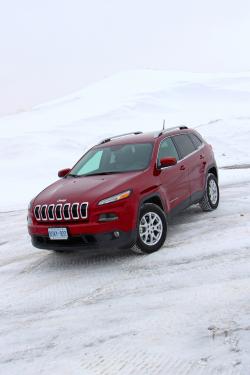 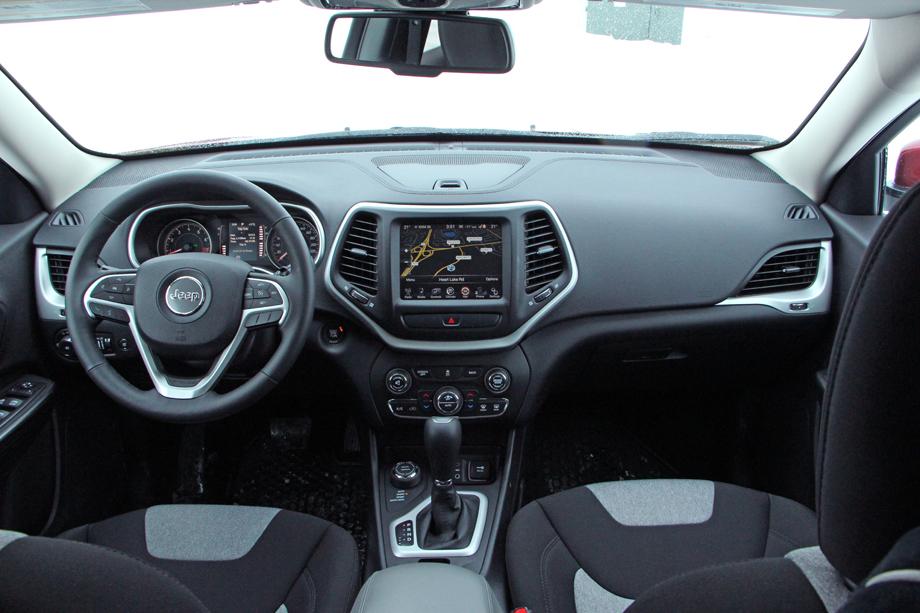 2014 Jeep Cherokee North 4×4 V6. Click image to enlarge |
In my week with the Cherokee, I managed 11.9 L/100 km in deep snow, plodding commutes, sub-zero temperatures and some unavoidable idling. We’ll aim to set up a comparison that will give us a better realistic expectation versus an equivalent competitor. In the meantime, expect the front-wheel-drive 2.4L four-cylinder to deliver the greatest efficiency, EPA rated at 10.7/7.6/9.4 L/100 km (22/31/25 mpg).
But it’s not all about efficiency, and on the power and refinement side of the powertrain equation, the 3.2L Pentastar delivers smooth, even power, with a flat, generous torque curve, maxing out at 239 lb-ft at 4,400 rpm, but plenty down low thanks to all the engine innovations and the automatic all-wheel-drive delivering the power to the snow-, slush- and ice-covered pavement. The refinement is a treat, especially compared to competitors’ direct-injection turbos. However, the sheer multitude of ratios may result in a preponderance of gear changes, sometimes seeming like a CVT winding up through the rev band, perhaps looking for that peak 271 horsepower at 6,500 rpm. Because of the slow commuting in bad weather, we experienced a lot of shifting at speeds between 40 and 80 km/h with a lot of accelerating and decelerating to match the flow of traffic. Any transmission would have had to shift frequently, but the more gears, the more shifting.



































